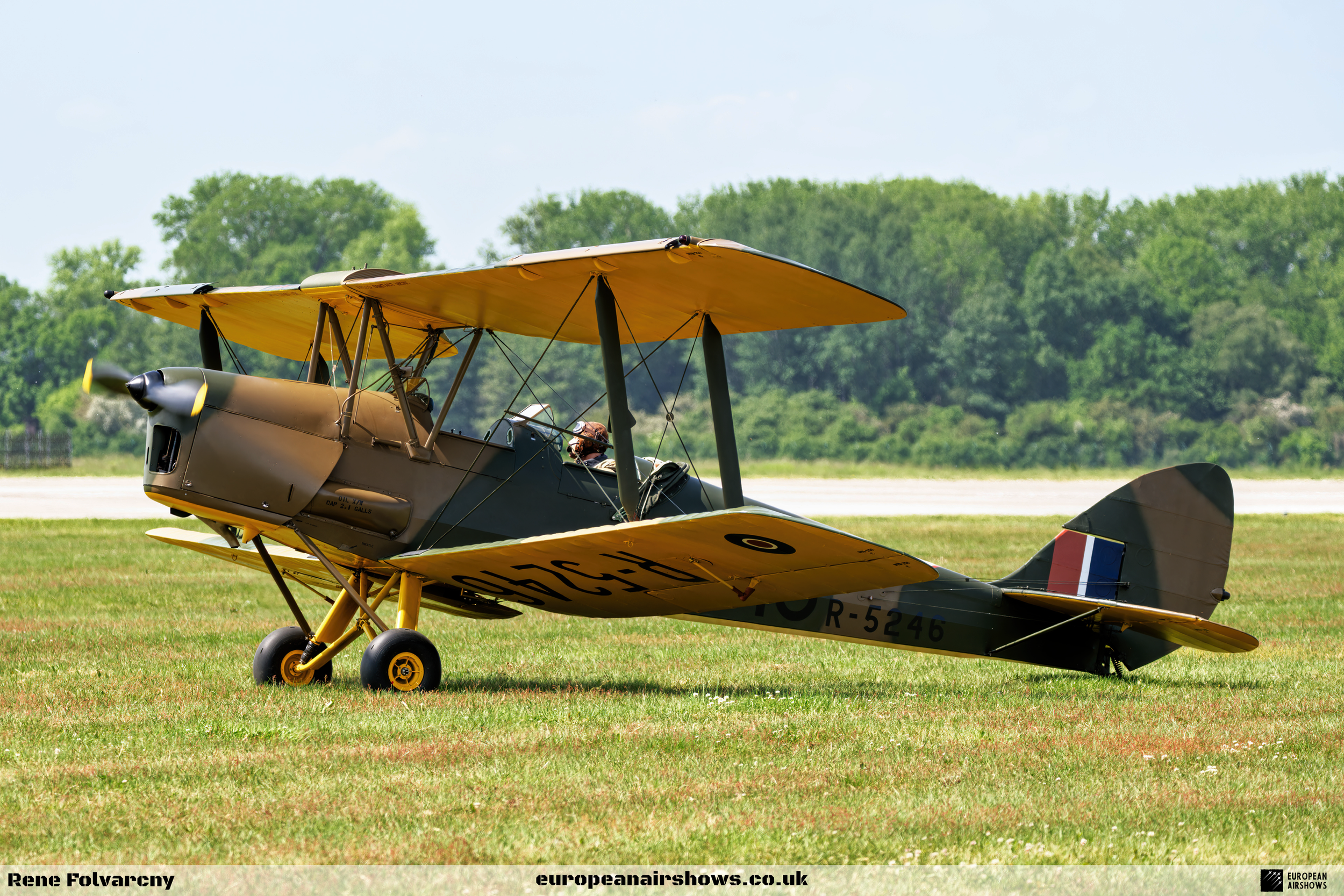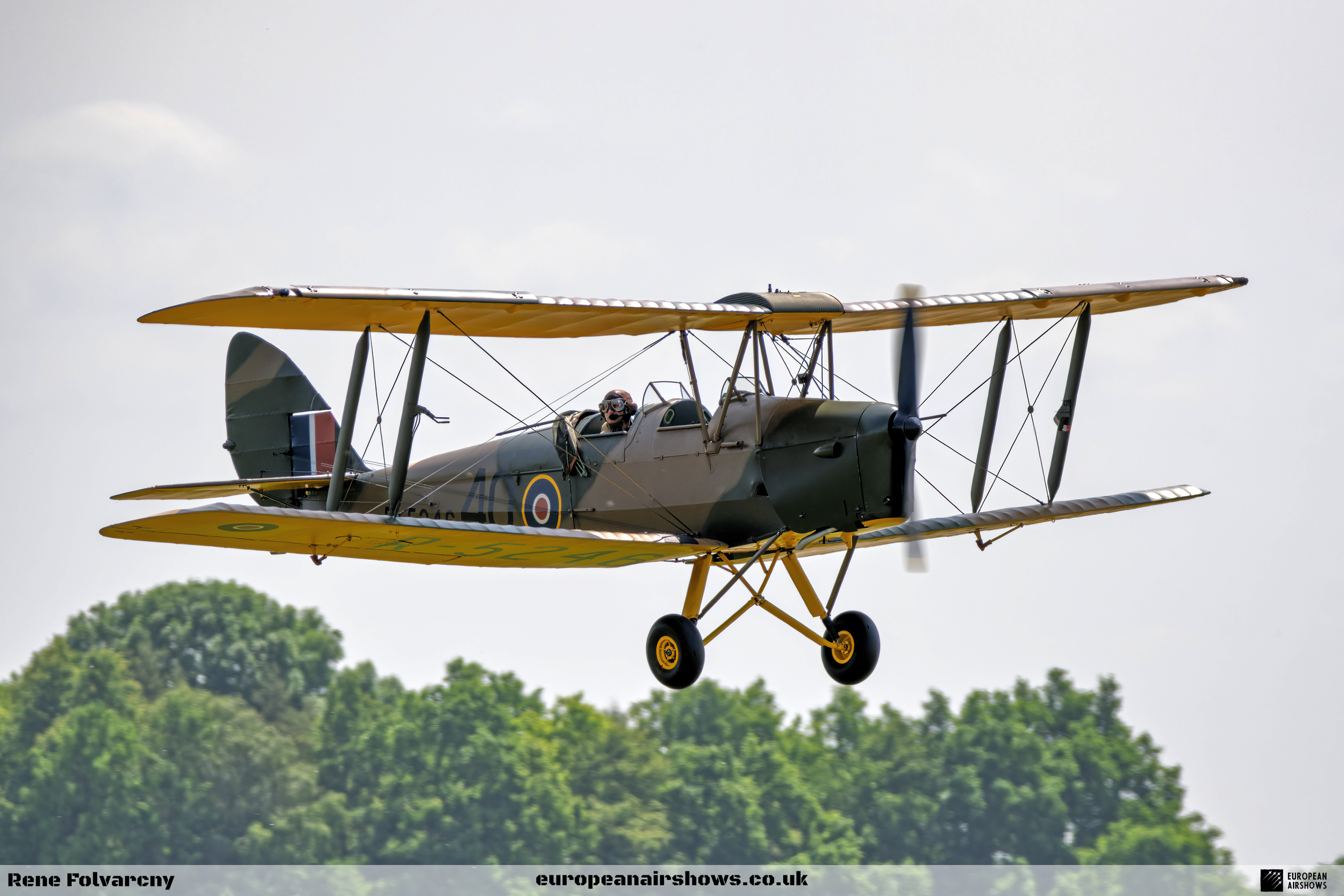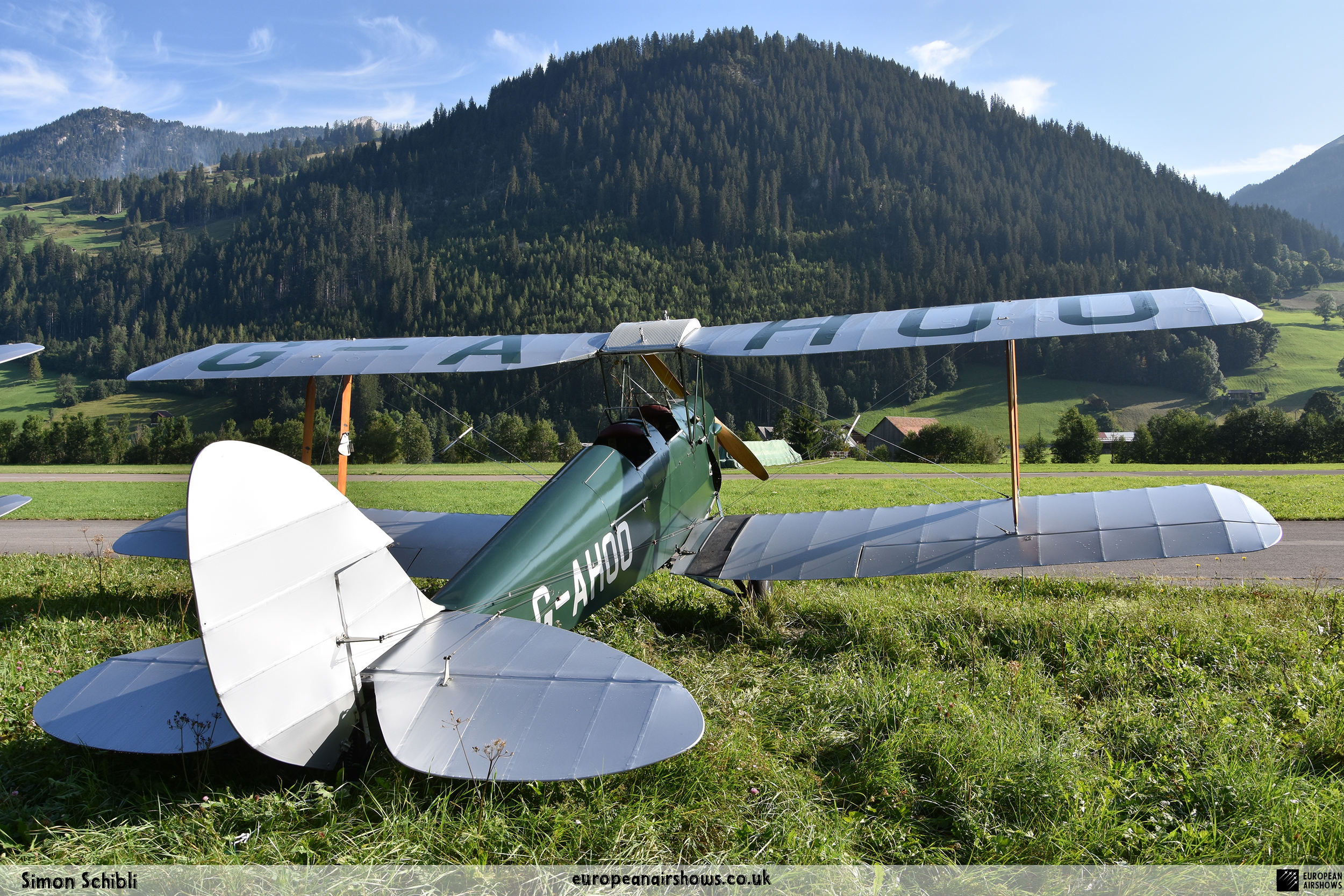
October 26 / de Havilland Tiger Moth first flight
First Flight 26 October 1931
de Havilland Tiger Moth
The de Havilland DH.82 Tiger Moth, a British biplane designed by Geoffrey de Havilland in the 1930s, has a storied history that spans both military and civilian aviation. Built by the de Havilland Aircraft Company, the Tiger Moth was primarily used as a trainer aircraft by the Royal Air Force (RAF) and other operators. Its versatility, however, saw it adapted for various roles during the Second World War, including maritime surveillance, defensive anti-invasion measures, and even as light bombers.
The Tiger Moth’s service with the RAF continued until the early 1950s when it was replaced by the de Havilland Chipmunk. Many of the surplus military aircraft found new life in civilian roles, and the Tiger Moth became a popular choice for recreational flying and flight training. Even today, it is occasionally used for primary training, especially for pilots looking to gain experience with tailwheel aircraft. Companies often employ Tiger Moths for trial lesson experiences, and the de Havilland Moth Club, established in 1975, provides a support network for owners.
The origins of the Tiger Moth can be traced back to Geoffrey de Havilland’s earlier designs, the de Havilland Humming Bird and DH.51. These early experiences led to the successful DH.60 Moth, which was scaled down from the DH.51. The DH.71 Tiger Moth, a low-winged monoplane, was developed to test the more capable Gipsy engines and became the precursor to the DH.82 Tiger Moth. The military trainer variant of the DH.60 Moth, known as the DH.60T Moth, incorporated several improvements from the DH.71, leading to the development of the Tiger Moth.
The DH.60T Moth had several shortcomings, which were addressed during trials at RAF Martlesham Heath. The resulting changes, including shortened interplane struts for better ground clearance, led to a favorable report and the type’s adoption as the RAF’s new basic trainer. The British Air Ministry ordered a prototype under Specification 15/31, leading to the creation of the DH.82 Tiger Moth.
Key changes from the preceding Moth series included improved access to the front cockpit, essential for training with parachutes. The solution involved shifting the upper wing forward and sweeping the wings back to maintain the center of lift. Other modifications included a strengthened structure, fold-down doors, and a revised exhaust system. The first true Tiger Moth prototype, E6, made its maiden flight on October 26, 1931, at Stag Lane Aerodrome, piloted by de Havilland Chief Test Pilot Hubert Broad. This led to the construction of the first 35 production aircraft for the RAF, designated K2567-K2601, along with two float-equipped seaplanes.
The Tiger Moth’s design featured a single-engine, biplane, taildragger configuration with two tandem seats. Initially powered by a de Havilland Gipsy III 120 hp engine, later models often had more powerful engines. The aircraft’s differential aileron control setup, operated by an externally mounted circular bell crank, was a distinctive feature. This design resulted in minimal downward aileron travel on the outside wing during turns, counteracting adverse yaw.
The Tiger Moth quickly proved to be an ideal trainer, simple and affordable to maintain. Its control characteristics, requiring positive and sure inputs, were favored by some instructors for weeding out inept student pilots. The aircraft became a commercial success, with orders from over 25 air forces and civilian customers. At one point, de Havilland’s manufacturing capacity was almost entirely dedicated to the Tiger Moth. In 1932, the company developed the de Havilland Fox Moth, an affordable air taxi based on the Tiger Moth’s components.
In late 1934, the RAF received 50 more refined Tiger Moths, sometimes called the Tiger Moth II, featuring the de Havilland Gipsy Major engine and plywood decking on the rear fuselage. Production focused on military trainers, with several contracts from the RAF and export orders. Civilian examples were also produced for British and international customers.
By the outbreak of the Second World War, 1,424 Tiger Moths had been completed. In 1941, de Havilland transferred principal manufacturing to Morris Motors Limited in Cowley, Oxford. British production ended in 1945, with Morris Motors having built 3,433 Tiger Moths.
Overseas manufacturing began in 1937, with de Havilland Canada producing 1,548 Tiger Moths, including variants like the DH.82C and Menasco Moth. Canadian-built aircraft featured modifications for local conditions, such as reinforced tail wheels and hand-operated brakes. de Havilland Australia assembled 1,070 Tiger Moths, most of which went to the Royal Australian Air Force. New Zealand, Sweden, Portugal, and Norway also produced Tiger Moths, often from kits shipped from the UK.
The Tiger Moth’s enduring legacy is a testament to its robust design and versatility, making it a beloved aircraft in both military and civilian aviation history.
Tiger Moth Facts
Versatile Roles: While primarily a trainer aircraft, the Tiger Moth was also used for maritime surveillance, defensive anti-invasion preparations, and even as light bombers during World War II.
Long Service Life: The Tiger Moth remained in service with the Royal Air Force (RAF) until the early 1950s, when it was replaced by the de Havilland Chipmunk.
Global Reach: The aircraft was produced and used in numerous countries around the world, including Canada, Australia, New Zealand, Sweden, Portugal, and Norway, among others.
Design Evolution: The Tiger Moth evolved from earlier de Havilland designs like the DH.60 Moth and the DH.71 Tiger Moth, incorporating improvements such as a forward-shifted upper wing for better cockpit access.
Unique Aileron Control: The Tiger Moth featured a differential aileron control setup, where the ailerons on the lower wing were operated by an externally mounted circular bell crank. This design minimized adverse yaw during turns.
Commercial Success: The Tiger Moth was a commercial hit, with orders from over 25 air forces and numerous civilian customers. At one point, de Havilland’s manufacturing capacity was almost entirely dedicated to this aircraft.
Post-War Civilian Use: After being phased out of military service, many surplus Tiger Moths entered civilian use, becoming popular for recreational flying and flight training.
de Havilland Fox Moth: In 1932, de Havilland developed the Fox Moth, an affordable air taxi using many of the Tiger Moth’s components. This aircraft featured a new plywood fuselage and an enclosed cabin for four passengers.
Manufacturing Milestones: By the end of British production in 1945, Morris Motors had built 3,433 Tiger Moths. Overseas, de Havilland Canada and de Havilland Australia also produced significant numbers, with the latter constructing 1,070 aircraft.
de Havilland Moth Club: Founded in 1975, the de Havilland Moth Club supports Tiger Moth owners, providing a mutual club and technical support. This organization helps preserve the legacy and continued operation of these historic aircraft.

















